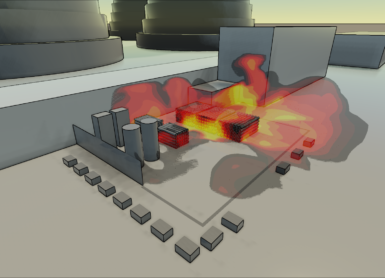
Written by:
Dr Karina Almeida Leñero | Energy Transition Technical Lead
Dr Chris Coffey | VP Products
Dr Shona Mackie | Senior Research Engineer
Today, the aviation industry accounts for about 3% of global carbon emissions annually, with the UK having one of the highest per capita aviation emissions in the world.
This alone is a strong incentive to decarbonise the aviation industry in order to meet net-zero emissions by 2050.
Several options that are currently being pursued include Sustainable Aviation Fuels (SAF), hydrogen fuel-cell electric planes, and planes using hydrogen gas turbines.
For long-haul flights, the hydrogen turbine propulsion system is considered the most promising option, with hydrogen being stored as a liquid to carry the amount of fuel required. However, due to the unique flammability characteristics of liquid hydrogen (LH2), the use of such fuel in aviation presents several safety challenges, from the materials used through aircraft refuelling procedures to the storage of large amounts of LH2 at or near the airport.
During the 3rd International Hydrogen Aviation Conference, Dr Karina Almeida Leñero, UK Energy Transition Technical Lead, presented a paper entitled ‘’Can we fly safely on liquid hydrogen? Using advanced modelling tools to understand the hazards’’, which she prepared together with Dr Chris Coffey and Dr Shona Mackie.
In this presentation, Karina discussed how advanced modelling using Computational Fluid Dynamics (CFD) can be used to understand the hazards from potential LH2 release scenarios while refuelling an aircraft and demonstrated how Gexcon’s FLACS-CFD tool can be used to simulate liquid hydrogen spills and their subsequent consequences (gas dispersion, fire, explosion).
By conducting such studies, we are able to provide reasonable estimates for the size of potentially flammable clouds, hazard distances for thermal radiation and explosion overpressure should a release be ignited, as well as explore how the layout and geometry around the release could influence these hazards.
These results can then be used to answer questions and provide guidance on issues on the location and layout of hydrogen refuelling “hubs” at airports, exclusion zones while refuelling aircraft, procedures for refuelling, and appropriate emergency response in case of an accidental release of hydrogen.
Would you like to learn more about this topic?
Watch our webinar and learn how advanced modelling using CFD can be used to understand the hazards from potential LH2 release scenarios while refuelling an aircraft.
Do you like what you read?
Get the latest trends in the field of process safety management straight to your inbox, and enhance your skills through knowledge sharing from industry experts.


